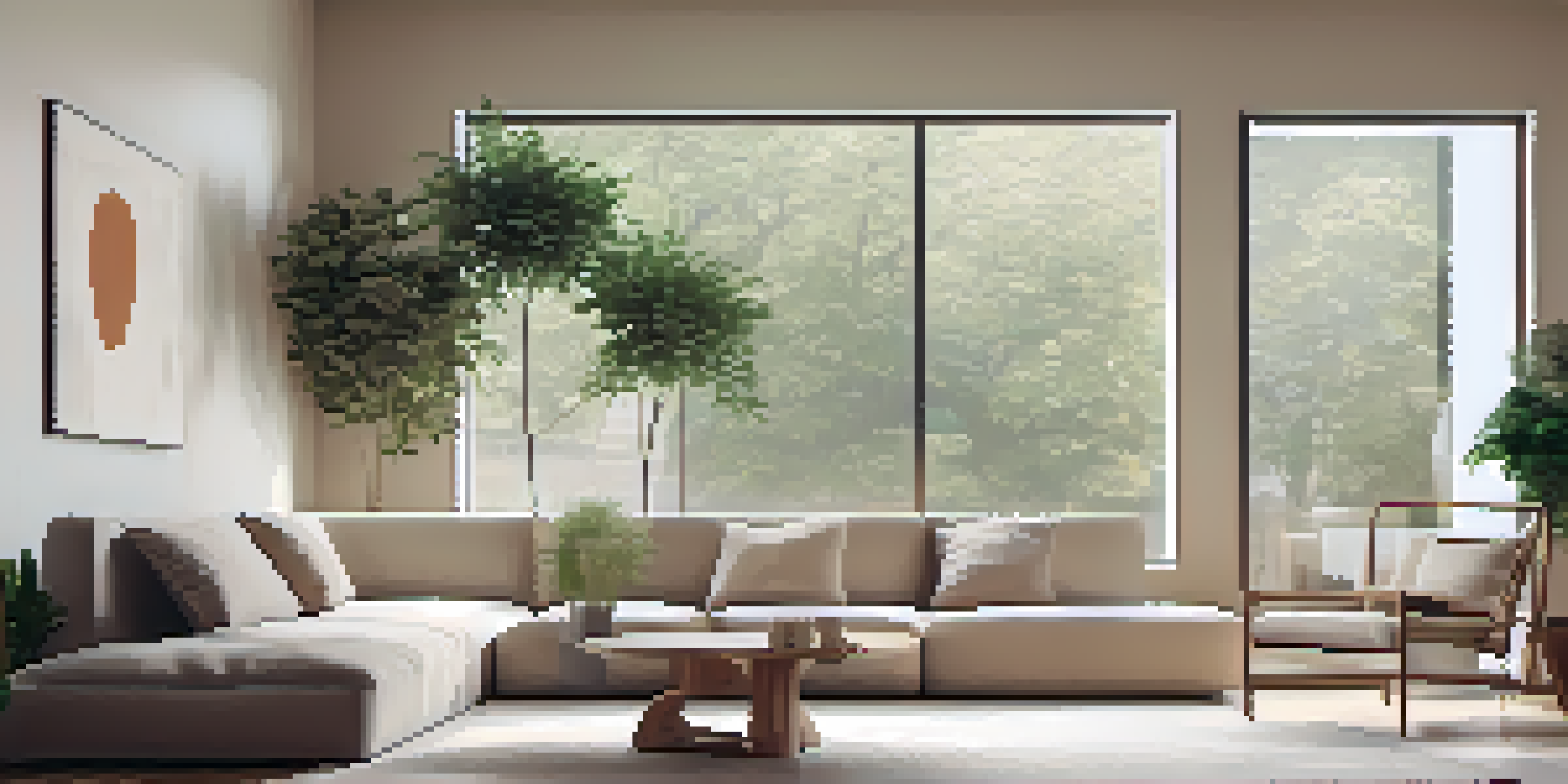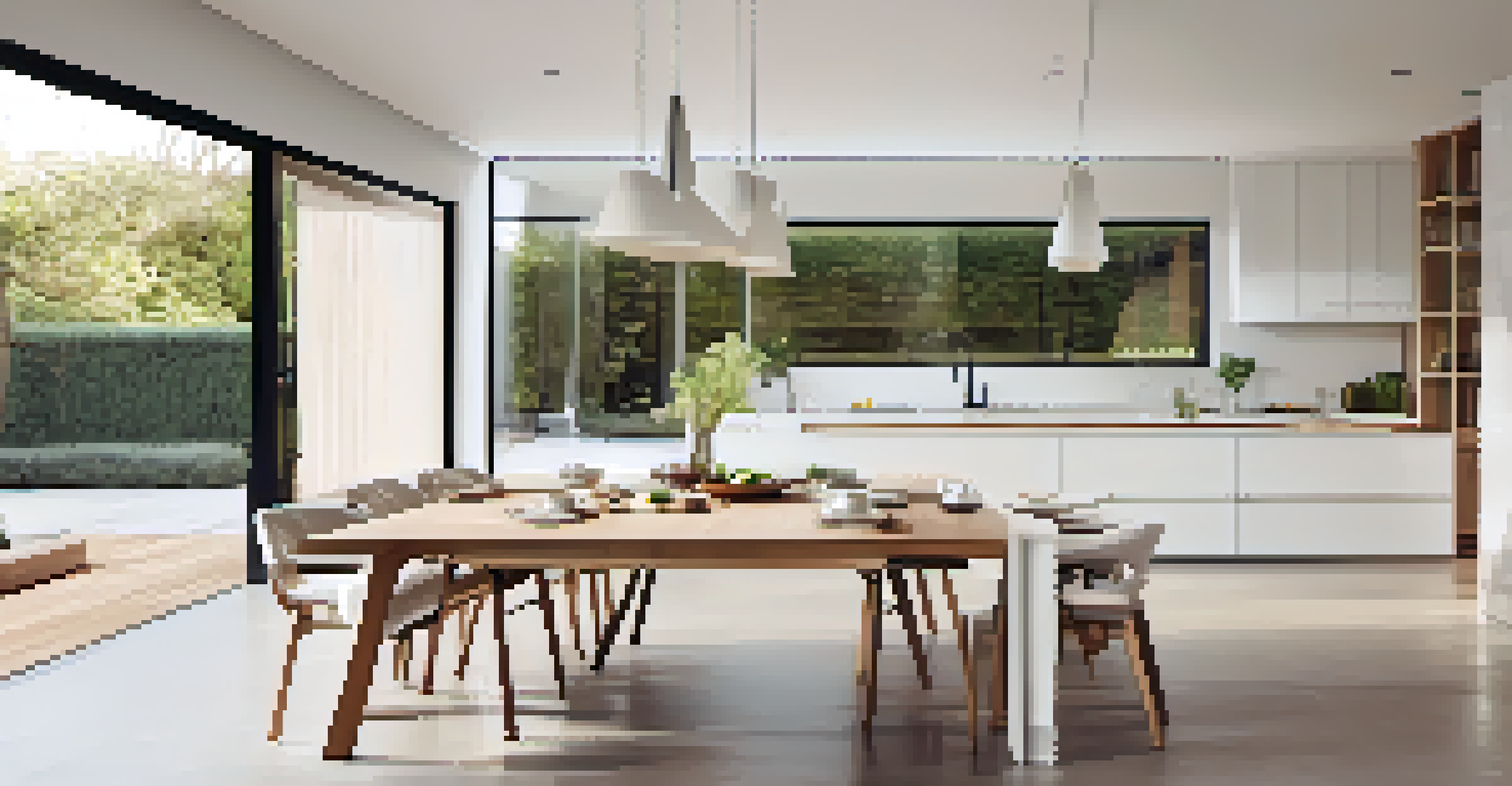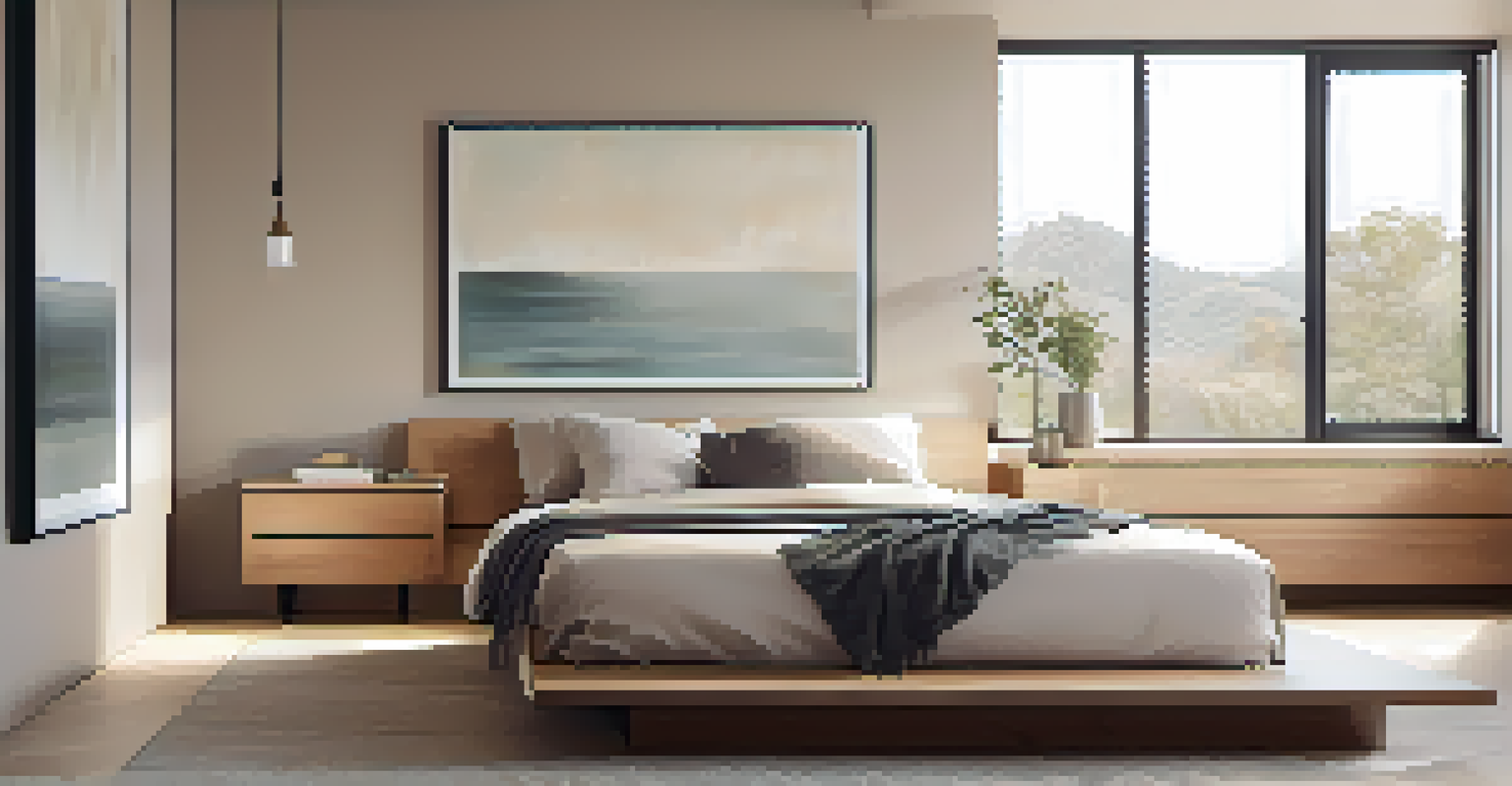Designing Homes with Minimalistic Principles

Understanding Minimalism in Home Design
Minimalism is more than just a design trend; it's a lifestyle choice that emphasizes simplicity and functionality. At its core, minimalism advocates for the removal of excess, allowing only what is necessary or meaningful to remain. This approach can lead to a more serene and organized living space, encouraging a sense of peace amid the chaos of daily life.
The ability to simplify means to eliminate the unnecessary so that the necessary may speak.
In home design, this means choosing clean lines, neutral colors, and functional furniture that serves a purpose without overwhelming the senses. Think of a minimalist home as a blank canvas where you can express your personality through a few carefully chosen pieces rather than a cluttered space filled with unnecessary items. The goal is to create an environment that feels open and inviting.
Minimalism also embraces the concept of 'less is more,' encouraging homeowners to invest in quality over quantity. By selecting fewer, high-quality items, you can create a cohesive aesthetic that reflects your style while maintaining a sense of tranquility. This mindset not only enhances your living space but can also improve your overall well-being.
Key Principles of Minimalistic Design
When designing a home with minimalistic principles, there are several key concepts to keep in mind. First, focus on functionality; every item should serve a purpose. This could mean investing in multifunctional furniture, such as a sofa bed or a coffee table with storage, which can help reduce clutter while maximizing space.

Another principle is to utilize a limited color palette. Soft, neutral tones like whites, grays, and beiges can create a calming atmosphere, making spaces feel larger and more open. Adding pops of color through artwork or accent pieces can introduce personality without overwhelming the senses.
Embrace Simplicity in Design
Minimalism focuses on removing excess to create a serene and functional living space.
Finally, incorporate natural light into your design. Large windows and open layouts help to create a sense of spaciousness and connection to the outside world. By allowing natural light to flood your home, you foster a warm and inviting environment that highlights the beauty of simplicity.
Choosing the Right Materials for Minimalism
The materials you select play a crucial role in achieving a minimalist design. Opt for natural materials like wood, stone, and metal, which add warmth and texture without being overly fussy. These materials also promote sustainability, aligning with the minimalist ethos of being mindful about consumption.
Simplicity is the ultimate sophistication.
Avoid overly ornate or decorative items. Instead, look for clean finishes and smooth surfaces that complement the minimalist aesthetic. For example, a sleek wooden table with a matte finish can serve as a stunning centerpiece without overwhelming the space.
Lastly, consider the durability of your materials. Investing in high-quality items means they will last longer, reducing the need for replacement and ultimately supporting a more sustainable lifestyle. The goal is to create a timeless space that doesn’t rely on trends, but rather embraces enduring design principles.
Creating Open Spaces with Minimalism
Open floor plans are a hallmark of minimalist design, promoting a sense of flow and spaciousness. By removing unnecessary walls and barriers, you can create a seamless transition between living areas, making your home feel larger and more inviting. This layout fosters better interaction between family members and guests.
When designing open spaces, be mindful of how you arrange furniture. Use area rugs to define different zones, such as a living area or dining space, while maintaining an overall cohesive look. This not only adds visual interest but also helps to keep the space organized and functional.
Functionality Over Quantity
Investing in multifunctional furniture and a limited color palette enhances both style and space.
Incorporating multifunctional spaces is another way to enhance open living. For instance, a home office can double as a guest room with the right furniture choices. This versatility is essential in a minimalist design, allowing you to maximize every square foot without sacrificing style.
Incorporating Nature into Minimalistic Homes
Integrating nature into your home design is a beautiful way to enhance the minimalist aesthetic. This can be achieved through the use of plants, natural light, and outdoor views. Houseplants not only purify the air but also add a touch of greenery that brings life to a minimalist space without cluttering it.
Consider large windows or sliding glass doors that open to outdoor areas, merging your indoor and outdoor environments. This connection to nature can create a tranquil atmosphere, promoting relaxation and well-being. It also allows you to enjoy the changing seasons, further enhancing your living experience.
Additionally, using natural materials such as stone or wood in your design can help reinforce this connection. For example, a stone accent wall or reclaimed wood furniture piece can serve as a striking focal point while maintaining the simplicity that minimalism embodies.
The Role of Lighting in Minimalistic Design
Lighting plays a crucial role in any home design, especially in minimalistic spaces. The right lighting can enhance the simplicity and elegance of a room while creating mood and ambiance. Aim for a mix of natural light and strategically placed artificial lighting to highlight key areas of your home.
Consider incorporating fixtures with clean lines and simple designs that blend seamlessly into your decor. Pendant lights or recessed lighting can offer a sophisticated touch without overwhelming the space. Additionally, dimmable lights allow you to adjust the ambiance to suit different occasions, further enhancing the versatility of your home.
Integrate Nature for Balance
Incorporating natural elements and light fosters a tranquil atmosphere that complements minimalist design.
Natural light should be prioritized wherever possible. Maximizing windows and using sheer curtains can allow sunlight to flood your home, creating a warm and inviting atmosphere. The interplay of light and shadow can also add depth and interest to minimalist spaces, demonstrating that simplicity can be beautifully complex.
Maintaining a Minimalistic Lifestyle at Home
Adopting minimalism in your home goes hand in hand with cultivating a minimalist lifestyle. This means consistently evaluating your belongings and making conscious decisions about what to keep, donate, or discard. A clutter-free environment fosters a clearer mind and can lead to increased productivity.
Set aside time regularly to reassess your space and belongings. This can be as simple as a seasonal decluttering session or a monthly review of items that no longer serve you. By doing this, you maintain the essence of minimalism and ensure that your home remains a sanctuary of simplicity.

Finally, embrace the idea of intentional living. This means being mindful of your purchases and lifestyle choices, ensuring they align with your values. By focusing on quality over quantity and prioritizing experiences over material possessions, you can cultivate a home that reflects your minimalist principles.